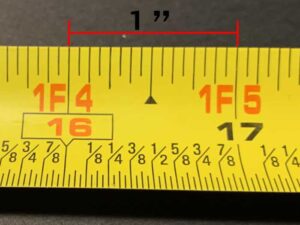Embarking on a journey to transform your fish’s well-being? Explore the transformative power of fish diet before and after, where we unveil the secrets to a healthier, more vibrant aquatic life.
Uncover the essential nutrients your fish crave, the optimal feeding frequency, and the importance of tailoring diets to different species and ages. Join us as we dive into real-world success stories, providing before-and-after comparisons that showcase the remarkable impact of dietary changes.
Pre-Diet Assessment
Prior to any dietary changes, it is crucial to assess the existing nutritional status of the fish. A typical diet for fish often consists of commercially prepared fish food, live or frozen prey, and occasionally fresh vegetables. However, these diets may not always provide a balanced and complete range of nutrients necessary for optimal fish health.
Common nutritional deficiencies or imbalances in fish can include:
- Protein deficiency: Essential for growth, tissue repair, and immune function.
- Lipid deficiency: Important for energy storage, cell membrane integrity, and hormone production.
- Vitamin deficiencies: Crucial for various metabolic processes, such as growth, reproduction, and immunity.
- Mineral deficiencies: Essential for bone and scale formation, as well as other physiological functions.
A balanced diet is vital for fish health, as it ensures the provision of all the necessary nutrients for growth, development, and overall well-being. Addressing nutritional deficiencies and imbalances through dietary changes can significantly improve fish health, reduce the risk of diseases, and enhance their overall vitality.
Dietary Modifications
The key to a healthy fish diet lies in providing a balanced combination of nutrients, tailored to the specific needs of your fish species and age. Here’s a comprehensive guide to help you craft an optimal feeding regimen for your finned friends:
Recommended Types of Food
Variety is key when it comes to fish food. Offer a mix of live, frozen, and pelleted options to ensure your fish receive a full spectrum of nutrients. Live food, such as brine shrimp or feeder fish, provides essential vitamins and minerals.
Frozen food, like bloodworms or mysis shrimp, offers convenience and nutritional value. Pellets, formulated specifically for different fish species and ages, provide a convenient and balanced diet.
Optimal Feeding Frequency and Portion Sizes, Fish diet before and after
The frequency and amount you feed your fish will vary depending on their species, age, and activity level. As a general rule, feed adult fish once or twice a day, while fry and juvenile fish may require more frequent feedings.
Avoid overfeeding, as it can lead to health problems. A good rule of thumb is to offer a portion that your fish can consume within a few minutes.
Considerations for Different Fish Species and Ages
Different fish species have unique dietary needs. Herbivores, like algae-eating plecos, require a diet rich in plant matter. Carnivores, such as cichlids or predatory catfish, thrive on a diet of meat-based foods. Omnivores, like goldfish or guppies, can consume both plant and animal matter.
Additionally, the age of your fish will influence their dietary needs. Fry and juvenile fish require smaller food particles and more frequent feedings than adults.
Post-Diet Evaluation: Fish Diet Before And After
Monitoring the progress of your fish after implementing dietary changes is crucial to ensure their health and well-being. Regular observations and veterinary check-ups can provide valuable insights into their condition.
If you’re looking to reduce your meat consumption without giving up on seafood, becoming a pescatarian might be the perfect option for you. Pescatarians enjoy a wide range of fish and seafood, but they abstain from eating meat, poultry, and other animal products.
How to be a pescatarian is a comprehensive guide that provides all the information you need to get started with this healthy and sustainable lifestyle.
Here’s how to evaluate the effectiveness of the dietary modifications:
Fish Behavior and Appearance
Observe your fish closely for signs of improvement in their behavior and appearance. Healthy fish should exhibit:
- Increased activity and energy levels
- Clear eyes and gills
- Smooth, shiny scales
- Reduced aggression or lethargy
- Improved appetite and growth rate
Veterinary Check-Ups
Regular veterinary check-ups are essential for assessing your fish’s progress and overall health. A veterinarian can perform:
- Physical examination to check for any abnormalities or signs of disease
- Blood tests to evaluate organ function and nutritional status
- Microscopic examination of scales or mucus to detect parasites or infections
Case Studies
Real-world examples of successful fish diet transformations showcase the positive impact of dietary modifications on fish health and appearance. These case studies provide valuable insights into the specific dietary changes that have led to positive outcomes.
Before-and-after comparisons of fish health and appearance demonstrate the dramatic improvements that can be achieved through dietary adjustments. These transformations highlight the importance of a balanced and species-appropriate diet for maintaining optimal fish well-being.
Betta Fish Case Study
- Before:A betta fish with a dull, faded appearance, lethargy, and a distended abdomen.
- After:The same betta fish after dietary modifications, exhibiting a vibrant, healthy appearance, increased activity levels, and a normal abdomen.
- Dietary Changes:The betta’s diet was adjusted to include live and frozen foods, such as brine shrimp, bloodworms, and daphnia. The frequency of feedings was also reduced to prevent overfeeding.
Goldfish Case Study
- Before:A goldfish with a bloated abdomen, protruding eyes, and difficulty swimming.
- After:The same goldfish after dietary modifications, with a reduced abdomen, clear eyes, and improved swimming ability.
- Dietary Changes:The goldfish’s diet was switched to a high-quality, low-carbohydrate fish food. The frequency of feedings was also adjusted to prevent overfeeding.
Additional Considerations
In addition to the factors discussed above, several other considerations play a role in determining the ideal fish diet.
Environmental Factors
The quality of the water in which fish live can significantly impact their diet. Fish that live in polluted water may have difficulty finding food and may be more susceptible to disease. Water temperature can also affect fish diet, as some fish species are more active and require more food when the water is warmer.
Avoiding Overfeeding and Underfeeding
It is important to avoid overfeeding and underfeeding fish. Overfeeding can lead to obesity, which can shorten a fish’s lifespan and make it more susceptible to disease. Underfeeding can also lead to health problems, as fish that do not get enough to eat may become weak and lethargic.
Creating a Sustainable and Cost-Effective Fish Diet Plan
When creating a fish diet plan, it is important to consider both sustainability and cost-effectiveness. Some types of fish food are more sustainable than others, and some are more cost-effective. It is important to find a balance between these two factors to create a diet plan that is both good for the fish and for the budget.
End of Discussion
Remember, a balanced diet is the cornerstone of fish health. By implementing the insights gained from this comprehensive guide, you’ll not only enhance the well-being of your aquatic companions but also forge an unbreakable bond through the joy of providing optimal nutrition.
FAQ Summary
What are the common nutritional deficiencies in fish diets?
Vitamin C, thiamine, and riboflavin are among the most common nutritional deficiencies observed in fish diets.
How often should I feed my fish?
The optimal feeding frequency varies depending on the species, age, and water temperature. As a general rule, feed adult fish once or twice a day, and fry (young fish) three to four times a day.
How can I tell if my fish is overweight?
Signs of an overweight fish include a rounded belly, difficulty swimming, and lethargy. If you suspect your fish is overweight, reduce the feeding frequency and offer a diet rich in vegetables and fiber.





Leave a Comment